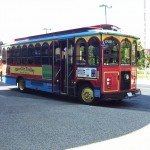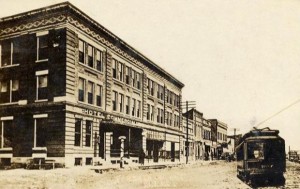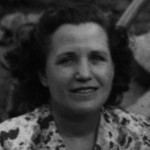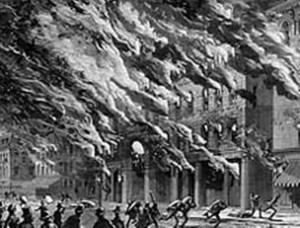street car
 While Bob and I were in San Francisco a number of years ago, we had the opportunity to ride the cable cars there. Cable cars, or trolley cars are pretty much a novelty in most places, but they used to be pretty commonplace. There are still many cities that operate a modern day version of the cable car, which is reality is more like a inter-city train than a cable car. But, the traditional cable car, street car, or trolley car were really very different from their modern day cousins, and the ride on the older version was really a lot of fun. Many cities had cable car systems that few people even remember. New York for example, has a huge subway system, but this came to be after the trolley system became problematic. Now, the old trolley system is just a faint memory, and in reality, one that is not very well known.
While Bob and I were in San Francisco a number of years ago, we had the opportunity to ride the cable cars there. Cable cars, or trolley cars are pretty much a novelty in most places, but they used to be pretty commonplace. There are still many cities that operate a modern day version of the cable car, which is reality is more like a inter-city train than a cable car. But, the traditional cable car, street car, or trolley car were really very different from their modern day cousins, and the ride on the older version was really a lot of fun. Many cities had cable car systems that few people even remember. New York for example, has a huge subway system, but this came to be after the trolley system became problematic. Now, the old trolley system is just a faint memory, and in reality, one that is not very well known.
In fact, problematic was maybe an understatement when it comes to reality concerning the cable car system. Once the automobile became a common item in the American household, there were a number of incidences involving the automobile and the trolley 
 or cable car. I’m sure you can guess who won that battle. The trolley or cable car was bigger, and it was after all, limited as to where it could operate, while the automobile was free to go where it chose…pretty much anyway. Nevertheless, there were collisions between the two forms of transportation…as well as traffic jams at times. Eventually, with automobiles becoming so commonplace, the trolley or cable car began to go by the wayside…Finally ending up as the novelty it is today.
or cable car. I’m sure you can guess who won that battle. The trolley or cable car was bigger, and it was after all, limited as to where it could operate, while the automobile was free to go where it chose…pretty much anyway. Nevertheless, there were collisions between the two forms of transportation…as well as traffic jams at times. Eventually, with automobiles becoming so commonplace, the trolley or cable car began to go by the wayside…Finally ending up as the novelty it is today.
When my daughter, Corrie Petersen and I were in Minneapolis in August of 2005, we had the opportunity to take a city tour on an old trolley car. Of course this one was of the variety that had come out when the automobile came out. It needed no cable, but was rather a trolley car bus, I suppose. The seats and the windows were definitely authentic trolley car though. The tour was a lot of fun…probably mostly because it was a novelty trip. Bob and I had an additional opportunities in Alaska, on a tour of Anchorage. I really like the  trolley car tours.
trolley car tours.
The other day I was looking at some old pictures of Montana history, and I came across something about Forsyth that I didn’t know about before. The little town of Forsyth, population about 1400 people in 1914, with one maim street is a place that you can easily walk across in just a few minutes. Nevertheless, the little town of Forsyth, Montana had a cable car in 1914, so people could ride the length of that main street…probably eight to twelve blocks. I was amazed to learn of that little tidbit of Forsyth history, which was the place where many of Bob’s family members lived, and where many still live today.
 I have been reading my Great Aunt Bertie Schumacher’s journal for a while now, and every time I pick it up I find something new. She started her journal by talking about how any writer can become famous in time, simply by observing the events around them and writing about those events, how they made people feel, and what happened because of those events. As a writer myself, I began to think about what she said, because there really is a vast difference, I think, between a writer and a reporter. A reporter simply tells the events as they happened, but a writer elaborates on the events, the people involved, and their feelings. There are reporters who are writers, obviously, but I think it would be very hard for a writer not to interject their thoughts and feelings into a report.
I have been reading my Great Aunt Bertie Schumacher’s journal for a while now, and every time I pick it up I find something new. She started her journal by talking about how any writer can become famous in time, simply by observing the events around them and writing about those events, how they made people feel, and what happened because of those events. As a writer myself, I began to think about what she said, because there really is a vast difference, I think, between a writer and a reporter. A reporter simply tells the events as they happened, but a writer elaborates on the events, the people involved, and their feelings. There are reporters who are writers, obviously, but I think it would be very hard for a writer not to interject their thoughts and feelings into a report.
Aunt Bertie wanted to tell a little bit about the things that were going on in their time. Still, she could not help but put into words how she felt about the events of the day. She mentioned that the first Kindergarten was formed in 1873. At that time there were only about 200 high schools in the entire country, but by 1900 there were 6000, along with colleges that were heavily endowed by the Rockefeller, Stanford, and Vanderbilt families. Fisk College for “blacks” came into being. Women were coming to the foreground. Football became a part of college life. You could become a doctor in four months…later it took three years, and we all know it takes much longer now. At that time, 98% of children were in the grades. Aunt Bertie mentions that it was thought that education was a cure all. Authors like Emily Dickinson, Bret Hart, and Mark Twain tried to enrich the world. There were streetcar and yacht races, P.T Barnum Circus, Dwight Moody held mass revivals, and McGuffy’s Reader taught moral lessons. And then she tells about the thing that bothers her the most, when she said, “But all this did not abolish CHILD LABOR!”  It seemed to Aunt Bertie that there were so many changes that the nation was seeing, but the one thing that appalled her the most at the time, was still there, and still endangering the lives of children. It was so hard for her to imagine that with everything else moving with such monumental steps toward a more modern civilization, that was so much more educated, that no one could stop child labor. In fact it seemed to her that no one noticed it, or even cared at all.
It seemed to Aunt Bertie that there were so many changes that the nation was seeing, but the one thing that appalled her the most at the time, was still there, and still endangering the lives of children. It was so hard for her to imagine that with everything else moving with such monumental steps toward a more modern civilization, that was so much more educated, that no one could stop child labor. In fact it seemed to her that no one noticed it, or even cared at all.
Her writings picture disasters, such as the panic in 1873, at the height of the reconstruction of the 1870’s…widespread unemployment, bankruptcy of many people, and failure of businesses, the Great Chicago fire and fires in Wisconsin, Boston, and other places that caused the failure of Insurance Companies who did not have enough Reserves to cover all of these disasters, railroad strikes and violence. Then she mentions what she terms “the sins of society”, one million people living in New York slums…ten to fifteen people in three rooms. The thought of so many people being forced to live in such appalling conditions tore at Aunt Bertie’s heart. Somehow, these things just should not be, and yet this was the world we were living in at that time.
Aunt Bertie wanted to tell about the things that were changing in our world, and how many improvements those changes were making to the world, but her tender heart just couldn’t get past the horrible injustices she could still see. There are lessons to be learned from her writings. Lessons of compassion, kindness, charity, and love for our fellow man. All too often we are so busy working on the improvements we want to make in our lives, society, and our  world in general, that we forget about how those things could affect the lives of others. The greed of the factory owners could not see past the profit to what their child laborers were suffering. Many changes have come from the horrors of the past. Child labor laws now protect our children, and as an insurance agent, I know that companies must hold enough in reserve to cover disastrous losses, and that while no insurance company is completely safe from failure, there is far less chance of it these days because of those reserves. While those days and events tore at Aunt Bertie’s tender heart, maybe society wasn’t totally deaf to the plight of the people after all.
world in general, that we forget about how those things could affect the lives of others. The greed of the factory owners could not see past the profit to what their child laborers were suffering. Many changes have come from the horrors of the past. Child labor laws now protect our children, and as an insurance agent, I know that companies must hold enough in reserve to cover disastrous losses, and that while no insurance company is completely safe from failure, there is far less chance of it these days because of those reserves. While those days and events tore at Aunt Bertie’s tender heart, maybe society wasn’t totally deaf to the plight of the people after all.

